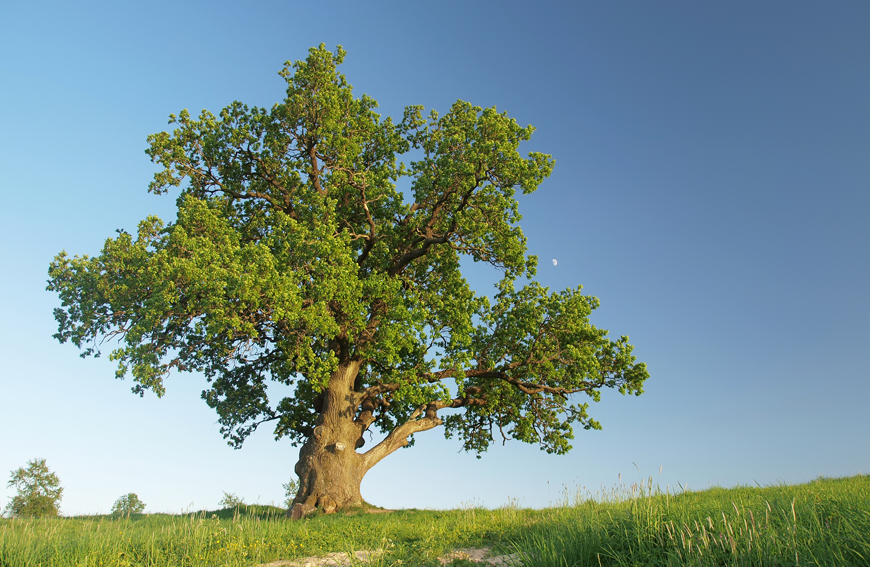Just like people, even though there are slight differences between them, trees all have the same anatomy. Each and every tree, no matter the species, has roots, a trunk, branches, and leaves. If you want to learn about each part, our team at Five Star Tree Services is going to go over it in our guide.
The Roots
Let’s start at the bottom and work our way up. To find the roots, you can locate them in the top 3 feet of the soil. Depending on the type of tree, these can go deeper and reach much further away from the tree. Most definitely reaching beyond the outside of the leaf radius, also known as the drip line. The roots can grow to 2-4x beyond this point in search of water below the surface. Roots are vital to the very survival of a tree. Without them, it wouldn’t be able to absorb nutrients from the soil or collect water. Not to mention it secures the tree in the ground, while also storing food for the winter.
The Trunk
There are 5 layers that comprise a tree trunk; the innermost layer is heartwood, then sapwood, cambium cell, inner bark, and finally, the outer bark.
Outer Bark
The outer bark is the protective layer that shields the tree from a lot of external threats, like insects. It also helps to insulate it, regulating its temperature against extreme heat and cold. The bark also regulates the overall moisture content of the tree, making sure it doesn’t dry out during hot seasons and doesn’t get too saturated during wet seasons.
Inner Bark
This is what helps food go through the tree, sort of like a pipeline or veins of a tree. Inner bark doesn’t last for very long and eventually turns into cork and becomes part of the outer bark to enhance its protective properties.
Cambium Cell
This is how a tree grows. This layer is what creates new wood and bark. It gets stimulated by hormones passing through the inner bark that come from the leaves. Each spring, the leaf buds produce a hormone called auxins. This is what stimulates cell growth.
Sapwood
This is how trees move water around and get it up to the leaves. It’s another type of pipeline, just like the inner bark. Eventually, this part of the tree ages and loses its vitality as the tree creates new sapwood. When this happens, it gets turned into heartwood.
Heartwood
This can be found at the center of the tree and it’s what supports the entire structure. Technically speaking, this part of the tree is dead. However, it does not lose its strength, nor does it decay. Unless the outer layers are impacted, it will remain intact and strong.
The Branches
Branches grow out of the trunk of the tree and are what grow things like leaves, flowers, and fruit. Branches are also what transport the water from the trunk, out to the leaves. This upper portion of the tree, which comprises the branches and leaves is known as the crown. This is what produces shade and also protects the ground beneath it when it rains.
The Leaves
These are the powerhouse of a tree. As the tree is feeding them water, they are simultaneously absorbing sunlight and carbon dioxide to create energy for the tree. This process is known as photosynthesis. A byproduct of this is that the leaves expel oxygen into the air. Coincidentally, it is what people need to breathe. Different leaf shapes also have their uses. They can do things like food-building, help water being used to reduce wind resistance, and allow excess rain to easily evaporate to ensure decomposition doesn’t start while they are still attached to the tree.
How Five Star Tree Services Can Help
Trees are fascinating and knowing about them can help you with your own trees in your yard. Our arborists at Five Star Tree Services can help you with any Tree Care in Toronto. We are just a call away! To reach us, give us a call at (416) 990-3355!


